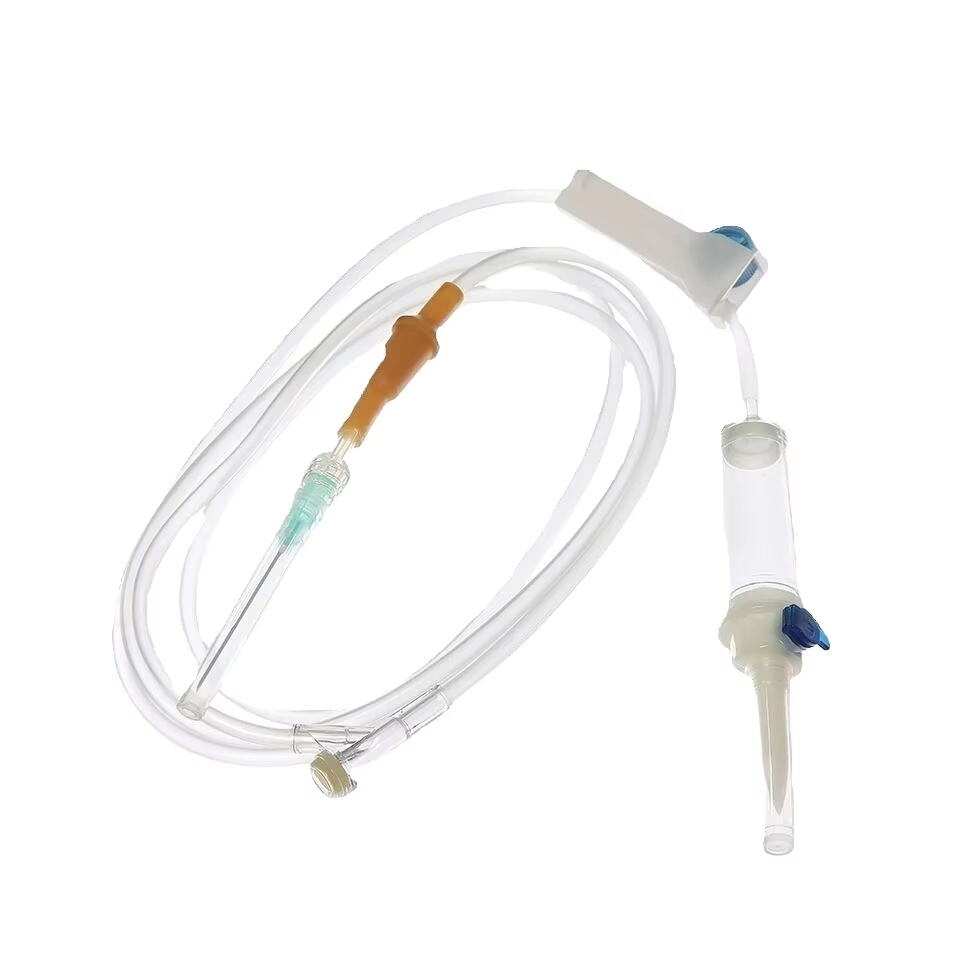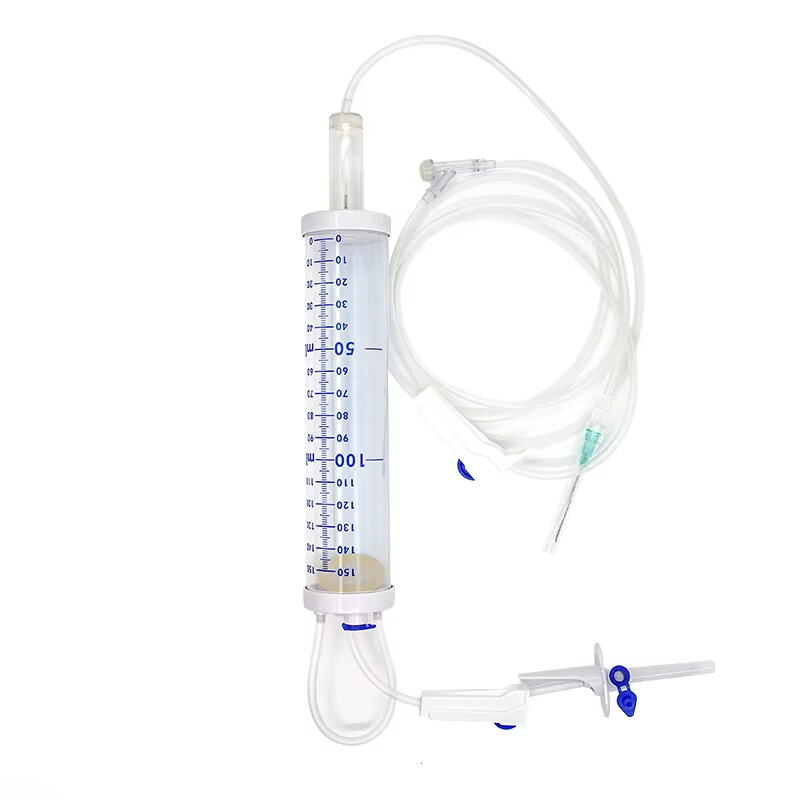Understanding Medical Infusion Equipment Essentials
Medical infusion sets play a vital role in modern healthcare delivery, serving as the critical connection between patients and their prescribed medications or fluids. These essential medical devices ensure precise and controlled administration of everything from basic hydration solutions to complex therapeutic medications. Healthcare providers must carefully evaluate various factors when selecting an infusion set to guarantee optimal patient outcomes and safety.

Key Components of Modern Infusion Systems
Primary Infusion Line Components
The foundation of any infusion set begins with its primary components. The spike or piercing device allows connection to the medication container, while the drip chamber helps clinicians monitor flow rates visually. Premium infusion sets incorporate precision-engineered tubing that resists kinking and maintains consistent flow. The roller clamp or flow regulator enables healthcare providers to adjust administration rates with accuracy, while multiple injection ports facilitate additional medication delivery when needed.
Advanced infusion sets also feature integrated safety mechanisms like needleless connectors and backcheck valves. These components help prevent contamination and maintain a closed system, reducing infection risks. The materials used in modern infusion sets undergo rigorous testing to ensure biocompatibility and durability throughout the intended duration of use.
Specialized Features for Enhanced Safety
Today's infusion sets incorporate numerous safety innovations designed to prevent common complications. UV-protective tubing preserves light-sensitive medications, while anti-free flow mechanisms prevent accidental gravity flow if the set becomes disconnected from the pump. Integrated air elimination filters trap potentially dangerous air bubbles before they can enter the patient's circulation.
Smart infusion sets may include electronic components that communicate with compatible pumps to verify proper setup and monitor ongoing delivery. These advanced features provide additional layers of protection for both patients and healthcare providers, helping to prevent medication errors and improve overall care quality.
Selecting Infusion Sets for Specific Applications
Critical Care Requirements
In intensive care settings, infusion sets must meet elevated standards for precision and reliability. Multi-channel sets allow simultaneous administration of multiple medications while maintaining separate flow paths. High-pressure rated tubing accommodates rapid fluid delivery during emergent situations. The material composition must withstand aggressive disinfection protocols and remain compatible with a wide range of medications.
Critical care infusion sets often incorporate specialized ports for blood sampling or pressure monitoring. The tubing length requires careful consideration to minimize dead space while maintaining practical workspace organization. Sets designed for critical care typically feature enhanced visibility markings and clear labeling to support rapid verification during high-stress situations.
Home Care Considerations
Infusion sets intended for home use prioritize simplicity and ease of use while maintaining essential safety features. Longer tubing lengths accommodate patient mobility, while simplified clamping mechanisms facilitate adjustment by users with limited dexterity. Discrete designs and comfortable materials enhance patient acceptance during extended wear.
Home care infusion sets often include detailed instructions and clear markings to support proper setup by non-professional caregivers. The packaging and disposal systems are designed for convenient home management, while maintaining professional-grade sterility standards. Durability becomes particularly important as these sets may need to withstand various home environments and activity levels.
Material Considerations and Compatibility
Chemical Resistance Properties
The materials used in infusion sets must demonstrate exceptional chemical stability across a broad spectrum of medications. High-grade polymers resist degradation from aggressive solutions while maintaining clarity for visual inspection. Surface treatments may enhance compatibility with specific drug classes or reduce medication absorption into the tubing material.
Modern infusion sets undergo extensive testing to verify compatibility with common therapeutic agents. This includes evaluation of material stability, drug binding characteristics, and potential leaching of compounds from the set components. Healthcare providers must consider these material properties when selecting sets for specific medication protocols.
Environmental Impact and Sustainability
Growing environmental awareness has led to innovations in sustainable infusion set design. Manufacturers now offer options with reduced plastic content and recyclable components where safety standards permit. Some facilities have implemented successful recycling programs for appropriate infusion set components.
Environmental considerations extend to packaging materials and disposal protocols. While patient safety remains paramount, healthcare providers increasingly factor sustainability into their purchasing decisions. This has driven development of eco-friendly alternatives that maintain required performance standards while reducing environmental impact.
Maintenance and Best Practices
Infection Prevention Protocols
Proper handling and maintenance of infusion sets plays a crucial role in preventing healthcare-associated infections. Staff training must emphasize aseptic technique during setup and manipulation. Regular assessment of insertion sites and connection points helps identify potential complications early.
Documentation of set changes and routine maintenance supports compliance with established protocols. Healthcare facilities should maintain clear policies regarding maximum usage duration and indications for earlier replacement. Regular audits help ensure adherence to best practices and identify opportunities for improvement.
Quality Assurance Measures
Implementing comprehensive quality assurance programs helps maintain the integrity of infusion therapy. This includes regular inspection of inventory for damage or expiration, verification of proper storage conditions, and monitoring of patient outcomes. Staff competency assessments ensure consistent application of proper techniques.
Healthcare facilities should maintain relationships with reliable suppliers and track product performance data. Prompt reporting of any device-related issues helps manufacturers maintain quality standards and supports continuous product improvement. Regular review of available options ensures access to the most appropriate infusion sets for specific clinical needs.
Frequently Asked Questions
How often should infusion sets be replaced?
The replacement interval for infusion sets depends on several factors, including the type of therapy, institutional protocols, and manufacturer recommendations. Generally, primary administration sets should be changed every 96 hours for continuous infusions. However, sets used for blood products or lipid-containing solutions typically require more frequent changes, usually every 24 hours. Always consult your facility's policies and the manufacturer's guidelines for specific requirements.
What features should be considered when selecting an infusion set for pediatric use?
Pediatric infusion sets require special attention to details such as precise volume control, minimal dead space, and appropriate pressure ratings. Look for sets with clearly marked gradations, integrated anti-free flow mechanisms, and appropriate flow rates for pediatric therapy. The material should be latex-free and compatible with common pediatric medications. Additional safety features like needleless connectors and tamper-evident closures are particularly important for this vulnerable population.
How can healthcare facilities evaluate cost-effectiveness of different infusion set options?
When evaluating cost-effectiveness, consider not just the purchase price but also factors such as set duration, compatibility with existing equipment, staff training requirements, and potential impact on patient outcomes. Calculate the total cost of ownership, including disposal and storage requirements. Track key performance indicators like infection rates, medication errors, and staff satisfaction to assess the real value of different options. Consider conducting small-scale trials before making large-scale changes to infusion set suppliers.

